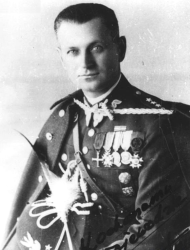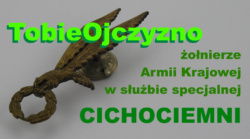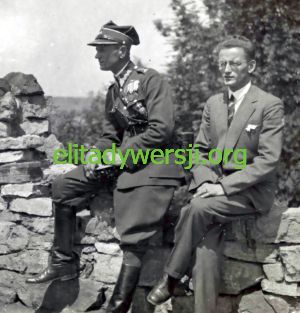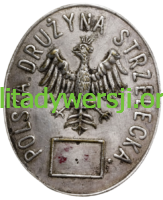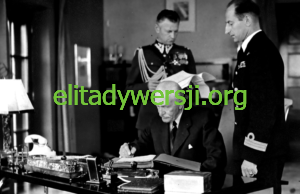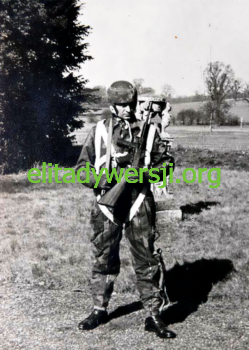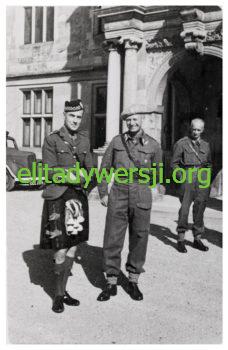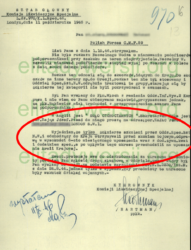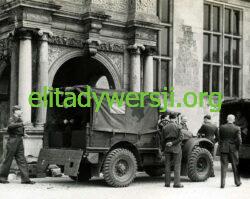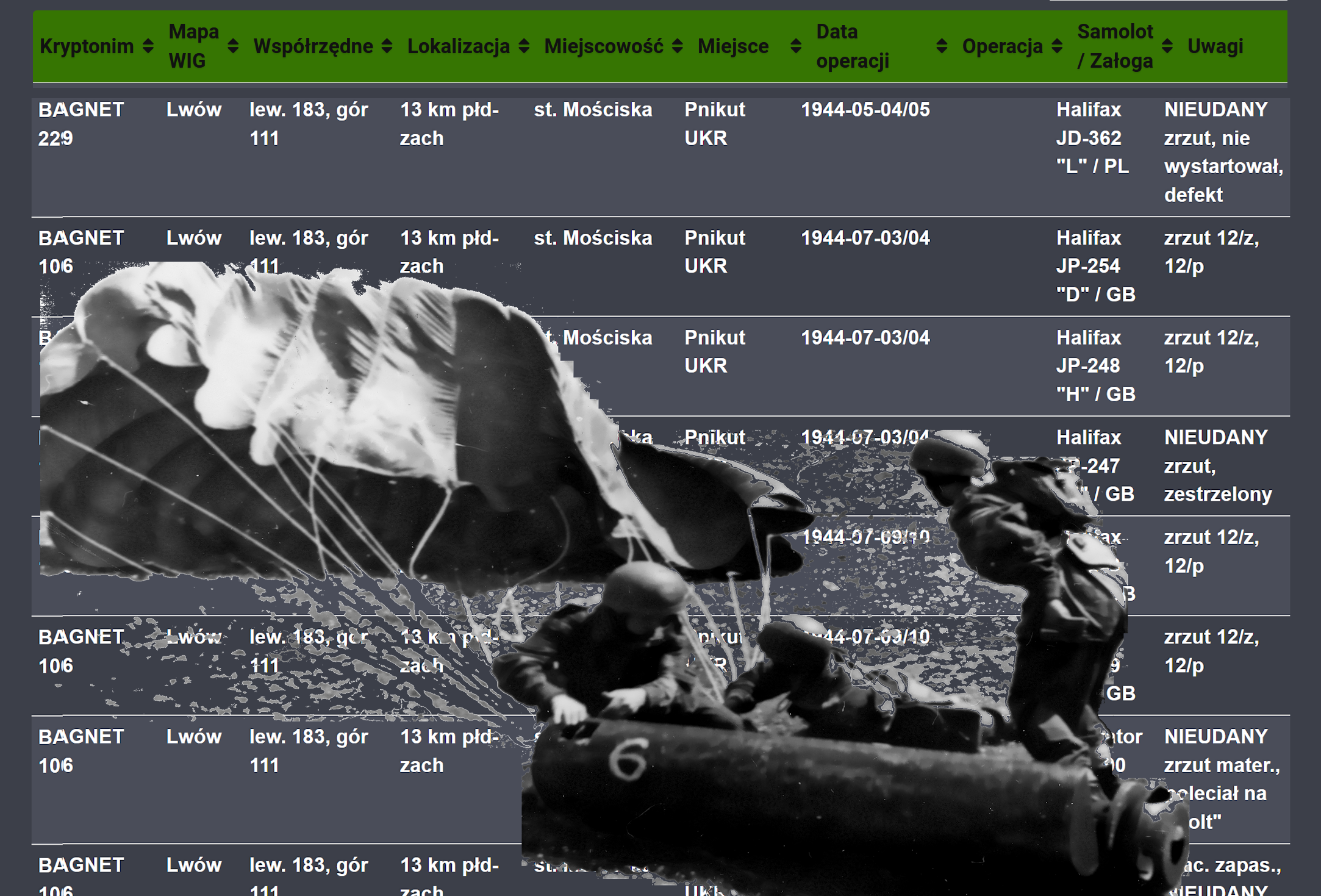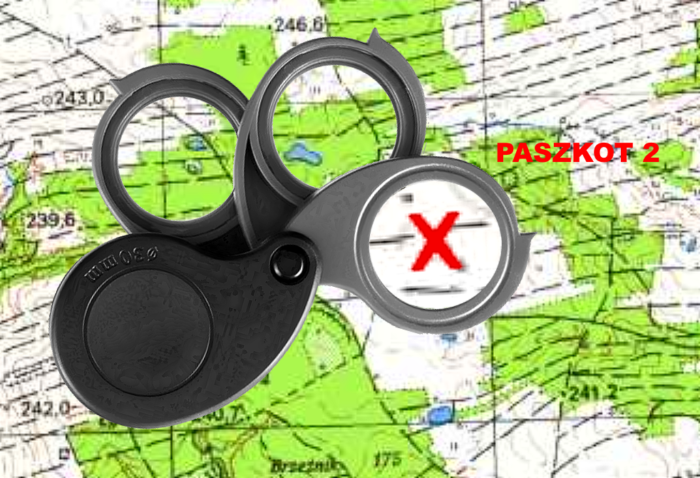płk. Józef Hartman – „ojciec cichociemnych”
Józef Sławomir Hartman
ps. „Roch”, „Sławek”, „Tata”
Zwykły Znak Spadochronowy nr 0010
ur. 27 października 1898 w Swaryszowie k. Jędrzejowa, zm. 24 kwietnia 1979 w Londynie – pułkownik Wojska Polskiego II Rzeczypospolitej, wieloletni adiutant prezydenta Ignacego Mościckiego, żołnierz Polskich Sił Zbrojnych na Zachodzie, komendant ośrodka szkoleniowego cichociemnych w Audley End STS 43, szef wyszkolenia Oddziału VI Sztabu Naczelnego Wodza, nazywany „ojcem cichociemnych”
- Działalność niepodległościowa
- Służba w Wojsku Polskim
- II wojna światowa
- „Ojciec Cichociemnych”
- Po wojnie
- Życie rodzinne
- Awanse, ordery, odznaczenia
W 1910 ukończył szkołę powszechną w Tarnawie k. Jędrzejowa, następnie rozpoczął naukę w gimnazjum w Szczekocinach. W roku szkolnym 1913-1914 uczęszczał na kursy pedagogiczne w Warszawie. W latach 1916 – 1917 uczył się w Publicznym Seminarium Nauczycielskim Męskim w Jędrzejowie. Ukończył je uzyskując uprawnienia nauczyciela „w publicznych szkołach ludowych z językiem wykładowym polskim”. Od czerwca 1917 do lipca 1920 kierował szkołą w Krzcięcicach.
Działalność niepodległościowa
Podczas nauki w gimnazjum w Jędrzejowie, jako szesnastolatek związał się z Polskimi Drużynami Strzeleckimi oraz ukończył w 1914 kurs strzelecki. 3 maja 1916 wstąpił do Polskiej Organizacji Wojskowej (POW) w Jędrzejowie, przyjmując pseudonim Roch. W 1917 zdał maturę oraz ukończył kurs instruktorski POW w Kielcach, następnie w 1917 kurs podoficerski w Jędrzejowie.
17 listopada 1917, protestując przeciwko powołaniu Rady Regencyjnej zorganizował wraz z ok. 200 członkami POW demonstrację na rynku w Jędrzejowie. W starciu z oddziałami austriackimi i niemieckimi ranny (ugodzony bagnetem w nogę). Następnego dnia aresztowany przez komendanta żandarmerii w Sędziszowie i osadzony w więzieniu w Kielcach. Uciekł dzięki pomocy POW.
Służba w Wojsku Polskim
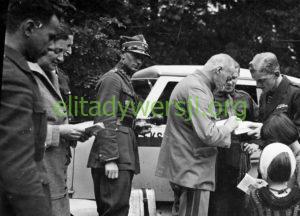
Marszałek Józef Piłsudski wpisuje się do księgi pamiątkowej harcerzy. Za Marszałkiem w mundurze (z kałamarzem w ręce) por. Józef Hartman. Sulejówek, 19 marca 1926.
źródło: NAC
Wstąpił ochotniczo do wojska w lipcu 1920. Przydzielony do 25. Pułku Piechoty w Miechowie, na front wyruszył z 204 Batalionem Ochotniczym 4 Pułku Piechoty Legionów. Walczył w Bitwie Warszawskiej. Po rozwiązaniu batalionu, jego kompanię wcielono do 2 Pułku Strzelców Podhalańskich. Walczył z bolszewikami m.in. w Bitwie Nemeńskiej, bitwie pod Kockiem (14-16 sierpnia 1920). 22 września 1920 ranny podczas bolszewickiego kontrnatarcia wzdłuż linii kolejowej Grodno – Kuźnica. Po zakończeniu działań wojennych wraz z pułkiem dołączył do garnizonu w Krośnie.
Od 14 lutego do 30 czerwca 1921 w Szkole Podchorążych Piechoty w Warszawie. 11 lipca 1921 skierowany na staż w 1 Pułku Piechoty Legionów w Wilnie jako dowódca plutonu. Od lutego 1925 do marca 1931 w Batalionie Manewrowym przy Centrum Wyszkolenia Piechoty w Rembertowie jako dowódca plutonu, dowódca plutonu szkoleniowego oraz w zastępstwie – dowódca kompanii.
W 1923 poznał marszałka Józefa Piłsudskiego, jako dowódca jego plutonu ochronnego podczas pobytu w Druskiennikach i Świątnikach. Od 1925 często bywał w dworku Piłsudskich w Sulejówku, opiekował się córkami, pomagał w ogrodzie. W czasie „przewrotu majowego” 1926 walczył po stronie Marszałka przeciwko wojskom rządowym, m.in. w okolicach mostu Kierbedzia i placu Zamkowego.
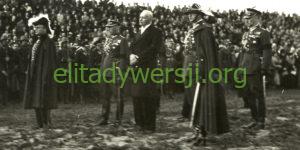
Pogrzeb Marszałka Józefa Piłsudskiego. Trzeci od lewej prezydent RP Ignacy Mościcki, czwarty od lewej adiutant prezydenta kpt. Józef Hartman. 17 maja 1935, Warszawa, Pola Mokotowskie.
Od marca 1931 przez rok dowodził plutonem w Batalionie Podchorążych Rezerwy Piechoty 5A w Cieszynie. W 1932 przeniesiony do Departamentu Piechoty Ministerstwa Spraw Wojskowych. W 1934 ukończył kurs spadochronowy w Jabłonnie, zorganizowany przez 2 Batalion Balonowy.
Od 24 stycznia 1934, po rekomendacji Józefa Piłsudskiego adiutant przyboczny Prezydenta RP prof. Ignacego Mościckiego. Występował obok Prezydenta R.P. w mundurze Dywizji Górskiej, której był żołnierzem, stając się symbolem Wojska Polskiego. Weteran POW, wojny z bolszewikami był przystojnym blondynem mającym 190 cm wzrostu, władał biegle (w mowie i piśmie) językami: angielskim, francuskim i rosyjskim.
II wojna światowa
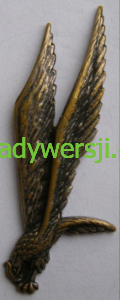 Po wybuchu wojny 17 września 1939 przekroczył granicę polsko – rumuńską wraz z Prezydentem RP. Zakończył służbę jako adiutant Prezydenta RP w grudniu 1939. Wstąpił do Polskich Sił Zbrojnych na Zachodzie pod dowództwem francuskim, od stycznia 1940 przydzielony jako dowódca kompanii oraz instruktor kursu broni przeciwpancernej w Nemours.
Po wybuchu wojny 17 września 1939 przekroczył granicę polsko – rumuńską wraz z Prezydentem RP. Zakończył służbę jako adiutant Prezydenta RP w grudniu 1939. Wstąpił do Polskich Sił Zbrojnych na Zachodzie pod dowództwem francuskim, od stycznia 1940 przydzielony jako dowódca kompanii oraz instruktor kursu broni przeciwpancernej w Nemours.
W lipcu ewakuowany wraz z polskimi żołnierzami do Wielkiej Brytanii. Wstąpił do Polskich Sił Zbrojnych na Zachodzie pod dowództwem brytyjskim. Jesienią odnowił przedwojenną znajomość z kursu spadochronowego z kpt. Maciejem Kalenkiewiczem. Jego przyjacielem był kpt. Jan Górski, obaj przedstawili gen. Władysławowi Sikorskiemu nowatorską koncepcję łączności lotniczej z Krajem. Za zgodą Naczelnego Wodza dołączył do Nich obu. Otrzymał zadanie wyszkolenia specjalistów różnego rodzaju, przeznaczonych do skoku do Polski, dla wsparcia Armii Krajowej.
 Jako jeden z pierwszych odbył szkolenie dywersyjne, m.in. kurs strzelecki w Inverlochy Castle oraz kurs organizatorów walki konspiracyjnej w Briggens. 1 kwietnia 1941 zaprzysiężony jako żołnierz Związku Walki Zbrojnej (ZWZ), przyjął pseudonim Sławek. Ukończył kurs spadochronowy (Znak Spadochronowy nr 0010) w STS 51 Ringway pod Manchesterem oraz rozpoczął kurs łączności w Dunkeld.
Jako jeden z pierwszych odbył szkolenie dywersyjne, m.in. kurs strzelecki w Inverlochy Castle oraz kurs organizatorów walki konspiracyjnej w Briggens. 1 kwietnia 1941 zaprzysiężony jako żołnierz Związku Walki Zbrojnej (ZWZ), przyjął pseudonim Sławek. Ukończył kurs spadochronowy (Znak Spadochronowy nr 0010) w STS 51 Ringway pod Manchesterem oraz rozpoczął kurs łączności w Dunkeld.
W jego trakcie przeniesiony do Oddziału VI (Specjalnego) Sztabu Naczelnego Wodza. Nie został zrzucony do Polski ze względu na duże ryzyko dekonspiracji – był zbyt powszechnie znany jako długoletni adiutant Prezydenta Mościckiego (jego wizerunek był przed wojną publikowany w prasie). Gen. Sikorski miał powiedzieć – „zamiast wysyłać go do Polski, strzelcie mu od razu w łeb. Na jedno wyjdzie”…
„Ojciec cichociemnych”
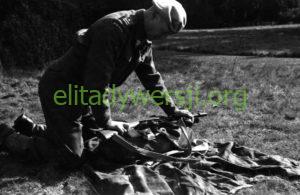
Audley End. Mjr Józef Hartman podczas ćwiczeń z pistoletem maszynowym Thompson, 1941 – 1943. IPMS, sygn. arch. kol. 604/9. Żródło: Karolina Brąkowska, Łukasz Karolewski, Pułkownik Józef Hartman, wyd. NAC oraz Fundacja im. Cichociemnych Spadochroniarzy AK, s. 91
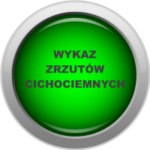 W związku z ryzykiem dekonspiracji uczestniczył jedynie w dwóch wyprawach komandosów na wybrzeże Francji.
W związku z ryzykiem dekonspiracji uczestniczył jedynie w dwóch wyprawach komandosów na wybrzeże Francji.
W latach 1941-1943 dowódca kursu walki konspiracyjnej w Briggens. Od lipca 1942 jako polski komendant Ośrodka Wyszkolenia Oddziału Specjalnego Sztabu Naczelnego Wodza (STS 43) w Audley End k. Saffron Walden, hrabstwo Essex (Wielka Brytania). Odpowiadał za szkolenie kandydatów na Cichociemnych; w ośrodku organizowano dwa kluczowe kursy specjalne: kurs walki konspiracyjnej oraz kończący cykl szkoleń kurs odprawowy. Ośrodkiem kierował wraz z komendantem brytyjskim – płk. Terrym Roper – Caldbeckiem, przy czym Brytyjczycy odpowiadali za administrację, zakwaterowanie, wyżywienie, zaopatrzenie i ochronę obiektu.
Kierownik Wydziału Wyszkolenia Sztabu Naczelnego Wodza, szef Wydziału w Oddziale Specjalnym Sztabu NW. Od lipca 1944 zastępca szefa Oddziału VI (Specjalnego) Sztabu Naczelnego Wodza. Aktywnie uczestniczył w szkoleniu wszystkich cichociemnych. Za swój ojcowski stosunek nazywany „tatą” oraz „ojcem cichociemnych”…
Mówił o Cichociemnych:
Wszyscy nasi i moi chłopcy „sami wybierani” – najpiękniejszy kwiat wojska – byli innym, niezwykłym wojskiem! Ich zespoły nigdy nie stanęły na zbiórce w całości, nie defilowali przy dźwiękach orkiestr. Nie otrzymali sztandaru, nie mieli dnia swojego święta i nie weszli do boju całym oddziałem! „Sami wybierani” wchodzili do akcji bojowej indywidualnie, tracąc przy tym dotychczasową swoją osobowość cywilną i żołnierską. Śmierć czyhała na nich od chwili oderwania się od ziemi angielskiej, towarzyszyła długo na własnej ziemi, a gdy ich dosięgła była okrutna!
Katarzyna Brąkowska, Łukasz Karolewski – Pułkownik Józef Hartman
NAC, Fundacja im. Cichociemnych, Warszawa, 2018, ISBN 978-83-927590-8-9
Po wojnie

Audley End. Komendant ośrodka mjr Józef Hartman składa meldunek gen. Władysławowi Sikorskiemu, 28 sierpnia 1942, CAW WBH – spis nr 2381/13 zał. 104, sygn. A.27902. Żródło: Karolina Brąkowska, Łukasz Karolewski, Pułkownik Józef Hartman, wyd. NAC oraz Fundacja im. Cichociemnych Spadochroniarzy AK, s. 91
2 grudnia 1945 przeniesiony do Oddziału Szkolenia Zawodowego Sztabu NW, w 1946 mianowany kierownikiem Komisji Likwidacyjnej Specjalnej Sztabu Głównego. Po rozwiązaniu Polskich Sił Zbrojnych na Zachodzie, od stycznia 1947 w Polskim Korpusie Przysposobienia i Rozmieszczenia. Dokumentował przebieg służby, awansów, odznaczeń skoczków, emisariuszy, żołnierzy zdemobilizowanych pomagając im otrzymać prawo przebywania na terenie Wielkiej Brytanii.
13 sierpnia 1948 zakończył służbę wojskową, w 1964 mianowany przez gen. Władysława Andersa na stopień pułkownika. Pozostał na emigracji w Wielkiej Brytanii, mieszkał w Londynie. Władze PRL pozbawiły go obywatelstwa, oskarżały m.in. o szpiegostwo. W 1959 przyjął obywatelstwo brytyjskie.
Schorowany, udzielał się w środowisku kombatanckim, działał w londyńskim Kole Cichociemnych Spadochroniarzy AK. Pracował w Głównej Komisji Weryfikacyjnej AK. Mój Dziadek Cichociemny był sekretarzem Koła Cichociemnych w Londynie oraz podwładnym płk Hartmana w Głównej Komisji Weryfikacyjnej AK, mieszkał w Londynie przy tej samej ulicy, nieopodal mieszkania płk Józefa Hartmana.
Do końca zajmował się losem Cichociemnych, pisał listy, zbierał publikacje o Polskich Siłach Zbrojnych na Zachodzie i Armii Krajowej, spotykał się z byłymi podwładnymi. Po śmierci każdego Cichociemnego, dla uczczenia jego pamięci sadził w swym ogrodzie przed domem krzak róży (posadził ich ponad sto).
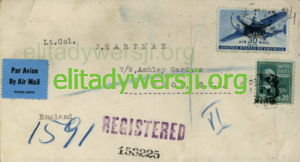 Utrzymywał kontakty z rodziną marszałka Józefa Piłsudskiego, także z prezydentem Ignacym Mościckim (do jego śmierci) i jego żoną. W latach 1956 – 1978 napisał 220 listów do Marii Mościckiej oraz otrzymał od niej 191 osobistych odpowiedzi. Gdy w 1965 uległ wypadkowi samochodowemu, na skutek czego odniósł ciężkie obrażenia i przebywał 8 miesięcy w szpitalu, otrzymał w prezencie od żony prezydenta futro prof. Mościckiego.
Utrzymywał kontakty z rodziną marszałka Józefa Piłsudskiego, także z prezydentem Ignacym Mościckim (do jego śmierci) i jego żoną. W latach 1956 – 1978 napisał 220 listów do Marii Mościckiej oraz otrzymał od niej 191 osobistych odpowiedzi. Gdy w 1965 uległ wypadkowi samochodowemu, na skutek czego odniósł ciężkie obrażenia i przebywał 8 miesięcy w szpitalu, otrzymał w prezencie od żony prezydenta futro prof. Mościckiego.
Nie mając prawa do brytyjskiej emerytury żył bardzo skromnie i podejmował się prostych prac, m.in. salowego w szpitalu oraz pomywacza naczyń w restauracji. Zmarł 24 kwietnia 1979 w swoim mieszkaniu przy 10 Ambassador Close w Londynie. Urnę z prochami pochowano na cmentarzu New Brentford Cemetery w Londynie.
Życie rodzinne

Rodzina Hartmanów: Od lewej, stoją: Jan, Jadwiga, Tadeusz, Stanisław, siedzą: Małgorzata, Karol, Emma (żona Stanisława)
Syn Karola Hartmana i Małgorzaty z domu Białek. Dziadkowie Fryderyk i Karolina byli niepiśmiennymi, bezrolnymi chłopami zamieszkującymi u gospodarzy, utrzymującymi się z pracy własnych rąk. Oboje byli luteranami pochodzenia niemieckiego. Rodzina przeszła na katolicyzm, ojciec Karol ochrzczony w obrządku rzymskim. Na początku XX w. Karol Hartman został leśniczym w majątku Bugaj. W podziękowaniu za wzorową służbę otrzymał od pracodawcy leśniczówkę w Szałasie oraz cztery hektary ziemi.
Miał czterech braci: Antoniego, Stanisława, Jana i Tadeusza oraz siostrę Jadwigę. 15 lutego 1947 zawarł związek małżeński z Grace Leborgne, wdową po angielskim pilocie doświadczalnym.
Awanse
- sierżant podchorąży – 23 grudnia 1920
- podchorąży – 1 lipca 1921
- podporucznik – 1 listopada 1921
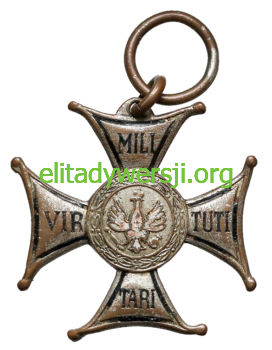
- porucznik – 1 lipca 1923
- kapitan – 1 stycznia 1932
- major – 19 września 1938
- podpułkownik – 1 marca 1944
- pułkownik – 1964
Ordery i odznaczenia
polskie:
- Krzyż Walecznych (trzykrotnie)
- Krzyż Srebrny Orderu Virtuti Militari
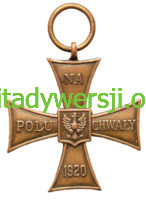
- Krzyż Komandorski Orderu Odrodzenia Polski (pośmiertnie, 6 czerwca 1979)
- Krzyż Oficerski Orderu Odrodzenia Polski
- Krzyż Niepodległości
- Złoty Krzyż Zasługi z Mieczami
- Medal Dziesięciolecia Odzyskania Niepodległości
- Odznaka za Rany i Kontuzje
- Medal Pamiątkowy za Wojnę 1918-1921
brytyjskie:
- The War 1939-1945 Medal – 1947
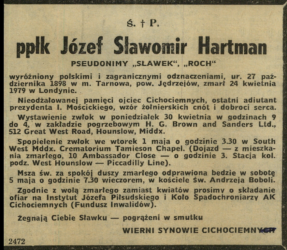
- Defence Medal – 1947
- An Officer – Honorary in the order of British Empire Military Division – 1948
belgijskie:
francuskie:
estońskie:
rumuńskie:
- Pour le Merite – 1938
- Steave Romanniei in gradul de ofiter – 1938
- Medalia Amintirei Carol drugiej klasy – 1939
- Order Korony Rumunii – 1939
węgierskie:

Fot. Tomasz M. Muskus. Dziękujemy 🙂
włoskie:
- Commenndatore deil’ordina della Cirina d’Italia – 1939
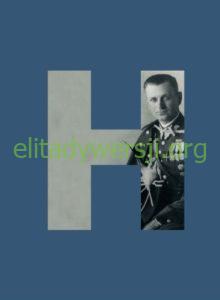
okładka albumu pt. Pułkownik Józef Hartman – do pobrania plik pdf
Źródła:
- informacje własne
- Wikipedia
- Roman Lewicki, Wojciech Markert, Józef Sławomir Hartman 1898-1979 Adiutant prezydenta i Ojciec Cichociemnych, OW Ajaks, Pruszków 2004
- Katarzyna Brąkowska, Łukasz Karolewski – (pdf do pobrania) Pułkownik Józef Hartman, wyd. Narodowe Archiwum Cyfrowe oraz Fundacja im. Cichociemnych Spadochroniarzy AK
Zobacz także:
- strona NAC, publikacje (także w j. ang) oraz nagrania RWE – Józef Hartman
- Polskie Radio – Wspomnienie płk J. Hartmana nt. dnia śmierci marszałka Józefa Piłsudskiego 12 maj 1935
Tł.
